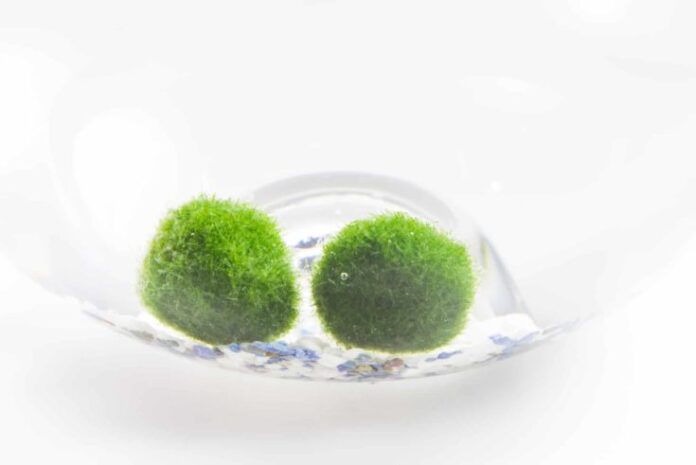Residing vegetation make a beautiful addition to any fish tank. Artistically organized aquatic vegetation look beautiful and provide hiding places for fry and shy fish species. Residing vegetation moreover take up nitrates from the water and supplies off oxygen all through photosynthesis, serving to to keep up the environment protected and healthful in your fish.
Even increased, you don’t should be a green-fingered educated to develop vegetation in your fish tank, as there are lots of easy-to-grow species which might be excellent for newbies.
Be taught this data to search out our favorite 19 aquarium vegetation which will cut back nitrate ranges in your aquarium water.
19 Biggest Aquarium Vegetation To Reduce Nitrates
Now, let’s get into our itemizing of the 19 most interesting aquatic vegetation to chop again nitrates throughout the freshwater aquarium. You can purchase all these vegetation at good fish outlets and on-line.
1. Marimo Moss Ball
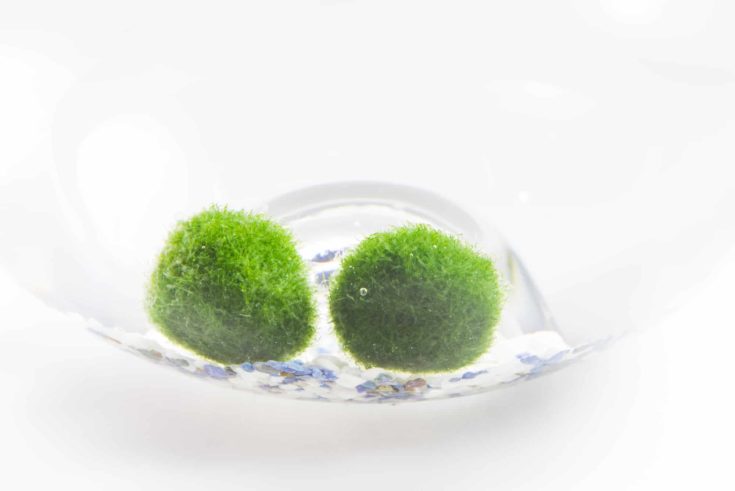

- Full title: Aegagropila linnaei
- Care downside: Easy
- Gentle Diploma: Low to medium
Marimo Moss Balls are a vastly customary aquarium favorite with hobbyists.
In reality, these weird inexperienced spheres normally will not be vegetation the least bit, nevertheless a species of algae. The algae develop on lake beds, the place the movement of the water’s gentle motion shapes them into their attribute spherical kind.
Marimo Moss does successfully in a low-light setup with cool water, although they’ll moreover keep in tropical tanks.
2. Amazon Frogbit
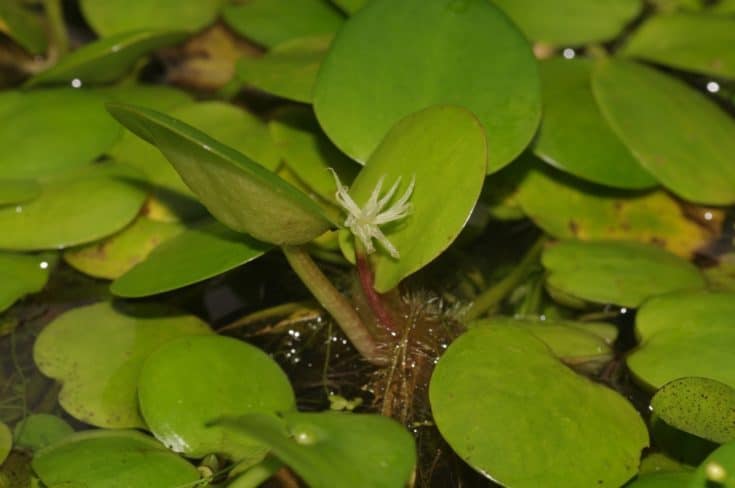

- Full title: Limnobium laevigatum
- Care downside: Easy
- Gentle Diploma: Low to Extreme
Amazon Frogbit is a super-easy surface-growing aquatic plant that acquired’t take over your tank as some associated vegetation do. Frogbit produces dangling roots that path down from the ground to create good hiding places for fry and timid fish species.
It’s possible you’ll maintain Frogbit beneath administration by using a plastic tubing ring.
3. Hornwort
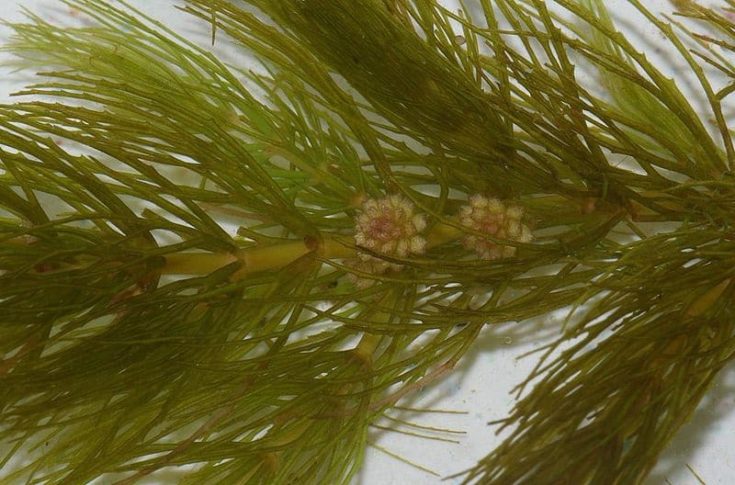

- Full title: Ceratophyllum demersum
- Care downside: Easy
- Gentle Diploma: Low to Extreme
Hornwort is tolerant of nearly any water temperature since it might be found rising on every continent moreover Antarctica.
There are over 300 completely totally different species of Hornwort to pick from. The plant can develop throughout the substrate or free-floating on the water ground. This generally is a tall plant which will contact the water ground if grown rooted throughout the substrate.
Hornwort is a straightforward plant to maintain nonetheless it does have a habits of shedding its bristle-like leaves, making a mess throughout the tank, and customarily clogging filter inlets.
4. Dwarf Hairgrass
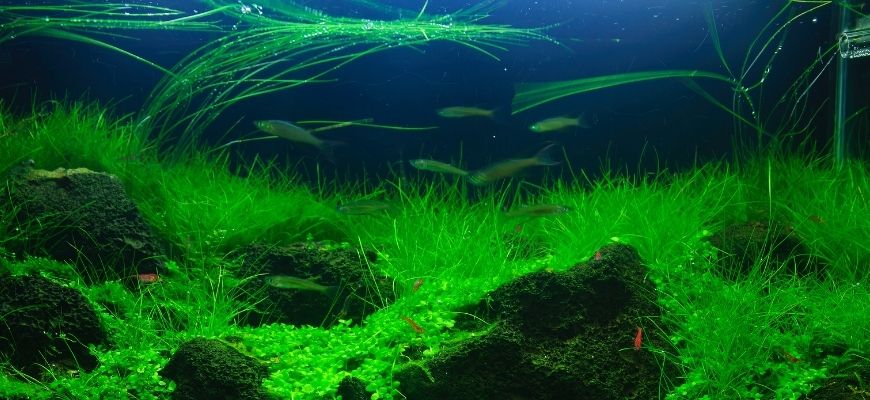

- Full title: Eleocharis Parvula
- Care downside: Easy
- Gentle Diploma: Medium to Extreme
Dwarf Hairgrass is a hardy, easy-to-grow plant that grows quickly, masking the substrate in a lush, grassy inexperienced carpet as a lot as 6 inches extreme.
There are two species of Dwarf Hairgrass, Eleocharis acicularis and Eleocharis parvula, every of which can be grown throughout the aquarium.
5. Water Wisteria
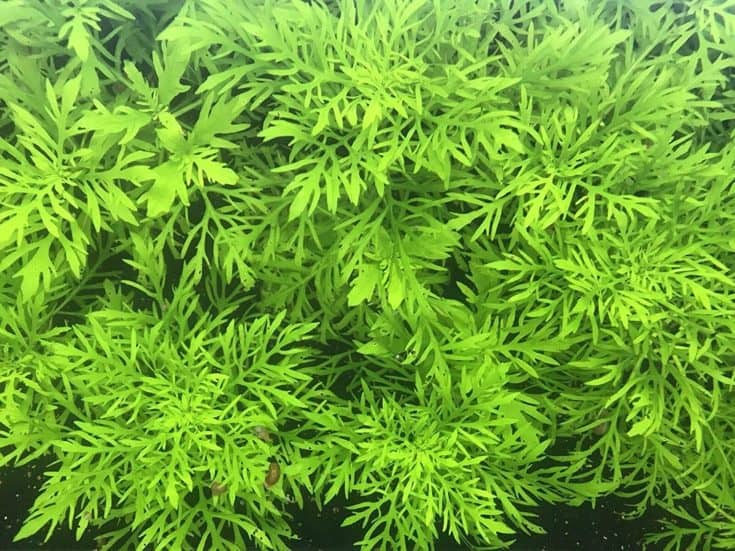

- Full title: Hygrophila Difformis
- Care downside: Easy
- Gentle Diploma: Medium
The tropical aquatic plant, Water Wisteria is a member of the Acanthaceae family.
The plant could possibly be very easy to develop and is powerful enough to have the power to take care of most rookie errors. You don’t should fertilize the plant or current it with explicit lighting. This beautiful vibrant inexperienced plant could also be grown as a carpet plant or free-floating on the ground.
6. Dwarf Water Lettuce
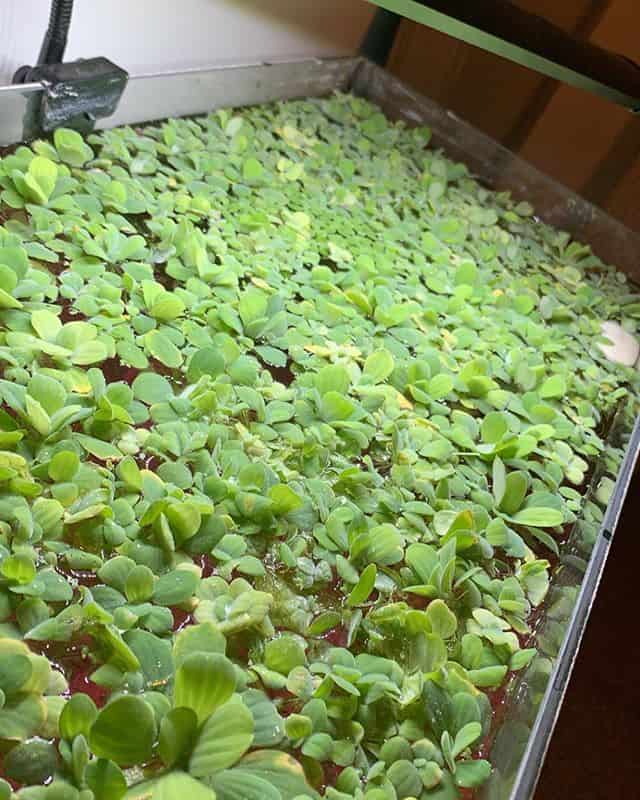

- Full title: Pistia stratioes
- Care downside: Easy to Common
- Gentle Diploma: Medium
Dwarf Water lettuce is considered native to Africa. This beautiful ground plant is a member of the arum family, which might be usually seen in numerous yard ponds.
The plant is pretty easy to develop and propagates rapidly. Nonetheless, although it’s a pretty sturdy plant, it does demand the becoming conditions and care to thrive.
7. Java Fern
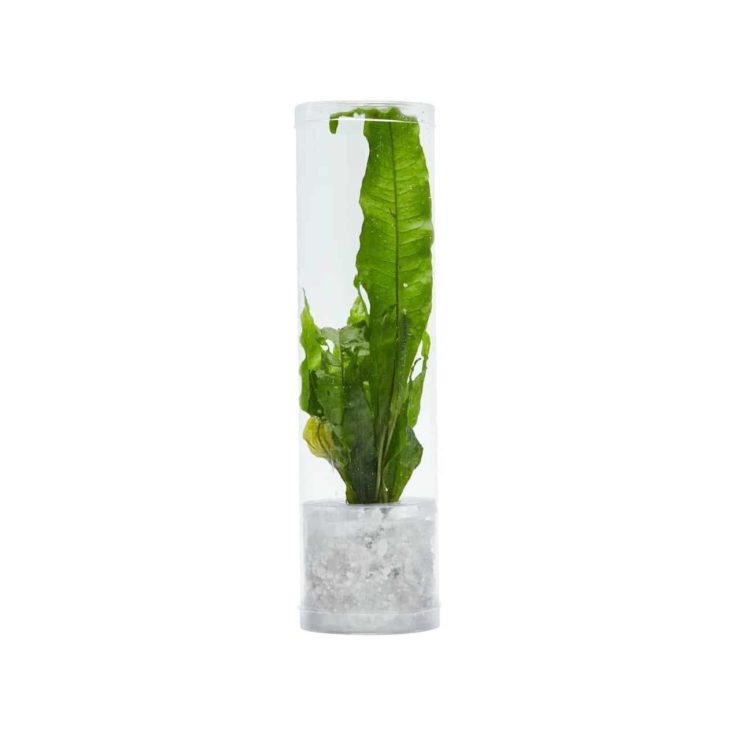

- Full title: Microsorum Pteropus
- Care downside: Easy
- Gentle Diploma: Low to Common
Java Fern is an particularly customary, beginner-friendly plant that’s easy to develop, provided that the rhizome is saved above the substrate.
It’s possible you’ll develop these vegetation rooted throughout the substrate or hooked as much as driftwood, rocks, and ornaments with fishing line or aquascaping twine. Java Fern is form of slow-growing, producing baby vegetation usually on its leaves. Merely take away the model new vegetation and fasten them to any onerous ground throughout the aquarium.
8. Anubias Barteri
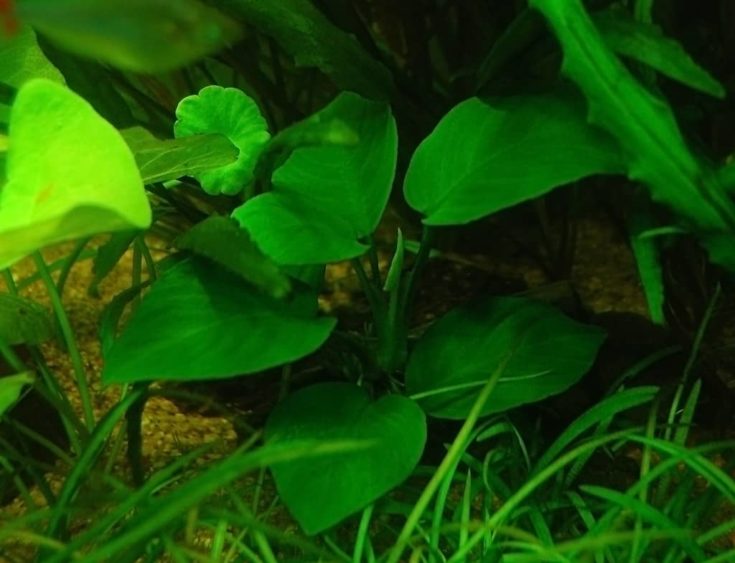

- Full title: Anubias barteri
- Care downside: Easy
- Gentle Diploma: Low to Extreme
Anubias barteri is true for use in a small tank, as a result of it doesn’t get too large, reaching merely seven inches in peak. Moreover, the plant could possibly be very easy to maintain and slow-growing, making it ideally fitted to newbies.
The plant can be very helpful for setups containing snails and fish species that want to nibble on plant leaves, as Anubias has sturdy, bitter leaves. It’s possible you’ll develop the plant throughout the substrate or hooked as much as rocks and wood. To propagate the plant, merely reduce up the rhizomes, and restore the kid vegetation to a little bit of driftwood or to a rock.
9. Water Sprite
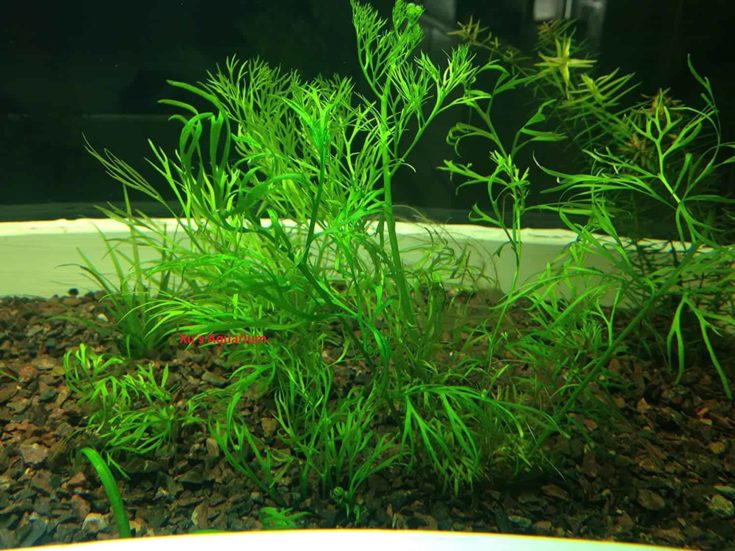

- Full title: Ceratopteris thalictroides
- Care downside: Easy
- Gentle Diploma: Medium
Water Sprite can be usually known as Water Fern, Indian Water Fern, and Oriental Water Fern. The plant could possibly be very versatile and could also be grown throughout the substrate or free-floating throughout the water.
The plant could possibly be very fast-growing, thrives in numerous completely totally different environments, and is straightforward to cultivate, so it’s ideally fitted to a beginner. It is also attainable to develop Water Sprite in precisely brackish water, although it’s truly a freshwater plant.
10. Java Moss
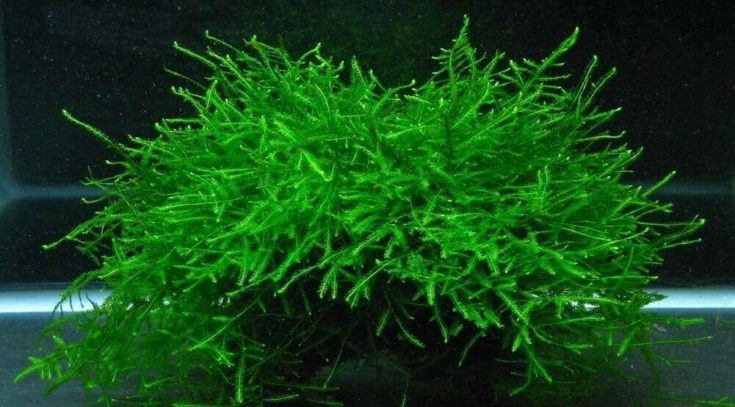

- Full title: Taxiphyllum Barbieri
- Care downside: Easy
- Gentle Diploma: Low to cheap
Java Moss comes from South East Asia and is extraordinarily customary with hobbyists, as a result of it’s easy to maintain and really partaking, too.
It’s possible you’ll develop the plant throughout the substrate as a carpet plant or mounted to driftwood. It is also attainable to develop this beautiful vibrant inexperienced moss as a free-floating plant on the ground of the water.
11. Duckweed
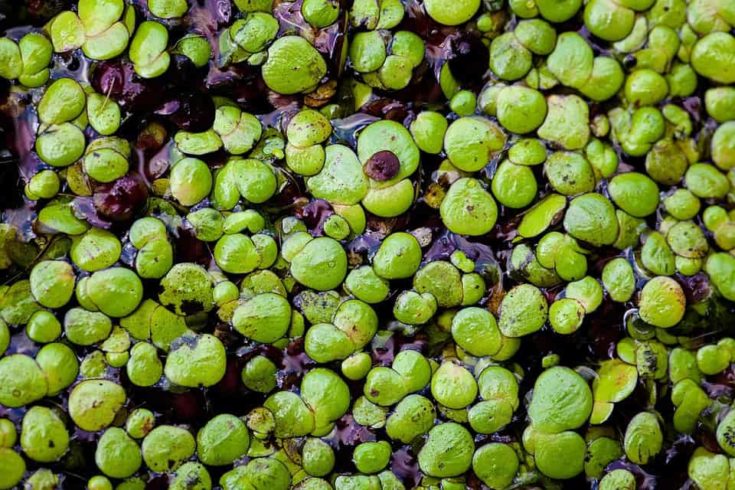

- Full title: Lemna minor
- Care downside: Easy
- Gentle Diploma: Low to Medium
Duckweed sucks up additional nitrates from the water like a sponge! This plant is awfully vigorous and quick-growing, rapidly masking the ground of the water.
Although the plant provides the proper hiding place for small fish and fry, it might be a ache because of it is in a position to rising to a couple cases its distinctive measurement in merely sooner or later! So, you’ll have to incorporate the Duckweed in a hoop of plastic tubing set on the ground so that it doesn’t overrun your tank.
12. Pothos
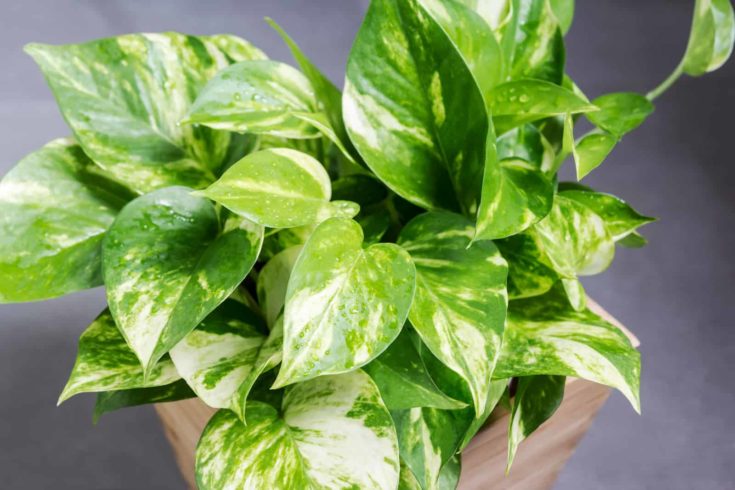

- Full title: Epipremnum aureum
- Care downside: Easy
- Gentle Diploma: Medium
Pothos is unquestionably increased known as a houseplant. Nonetheless, you could develop the plant in water, too, and it’s usually seen in terrariums.
Pothos vegetation are toxic, so don’t put the cuttings instantly into the fish tank. First, you could possibly root the cuttings in water in a separate container. As quickly because the plant’s wound has healed, it’s protected to put the plant into your aquarium. These vegetation are terribly greedy, quickly absorbing any obtainable nitrates throughout the water and serving to to keep up your tank healthful in your fish.
13. Water Spangles
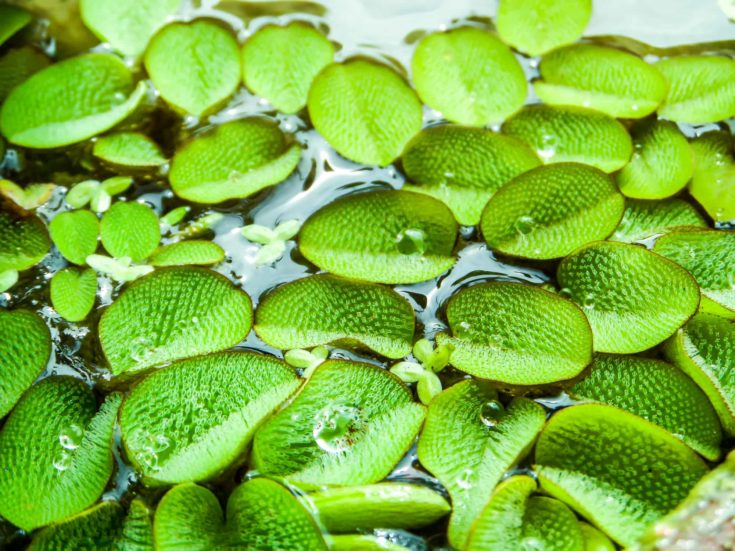

- Full title: Salvinia minima
- Care downside: Easy
- Gentle Diploma: Medium
Water Spangles is a species of free-floating aquatic fern that’s grow to be extraordinarily customary throughout the curiosity because of its quick growth worth, hardiness, ease of care, and adaptableness.
Not solely does the plant soak up nitrates from the water, nonetheless it moreover removes heavy metals, along with copper, very successfully. This beautiful plant quickly sorts networks of submersed, filamentous leaves that make the proper hideout for barbecue and web sites for bubble nests.
14. Tall Hairgrass
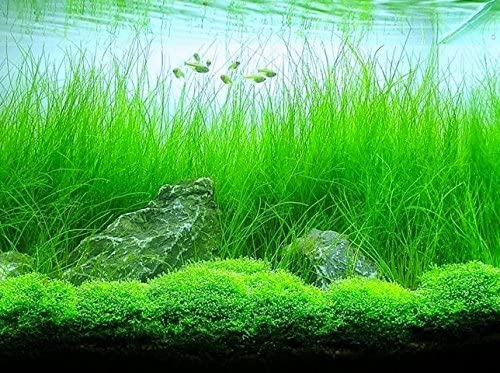

- Full title: Eleocharis montevidensis
- Care downside: Easy
- Gentle Diploma: Medium to Extreme
Tall Hairgrass is a carpet plant which will develop to achieve spherical 10 inches tall. Although it’s easy to develop, you do should trim the plant to encourage it to unfold out fairly than develop upward.
The first draw back with this plant is that it’d most likely make a mess in your tank, shedding its prolonged, grass-like leaves when you’re ending up routine maintenance. Nonetheless, Tall Hairgrass is pretty voracious regarding absorbing nutritional vitamins from the water.
15. Amazon Sword
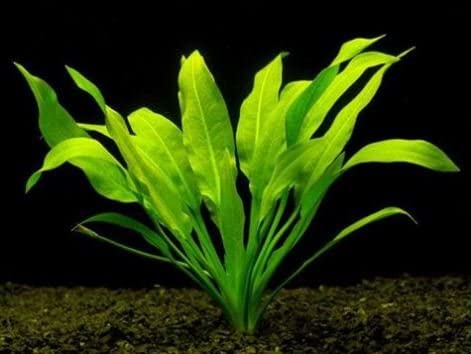

- Full title: Echinodorus bleheri
- Care downside: Easy
- Gentle Diploma: Medium
Amazon Sword is sort of the popular aquarium plant throughout the curiosity, and it’s good for a medium to large-sized aquarium.
The vegetation produce beautiful broad inexperienced leaves which might be excellent for bettas to loosen up on, and the deep root system stops the plant from being merely uprooted. Amazon Sword is easy to maintain and is straightforward to propagate. All you do is nip new vegetation from the underground flowering stems and plant them throughout the substrate.
16. Mainam Hygrophila Salicifolia Sp. Slender Leaf
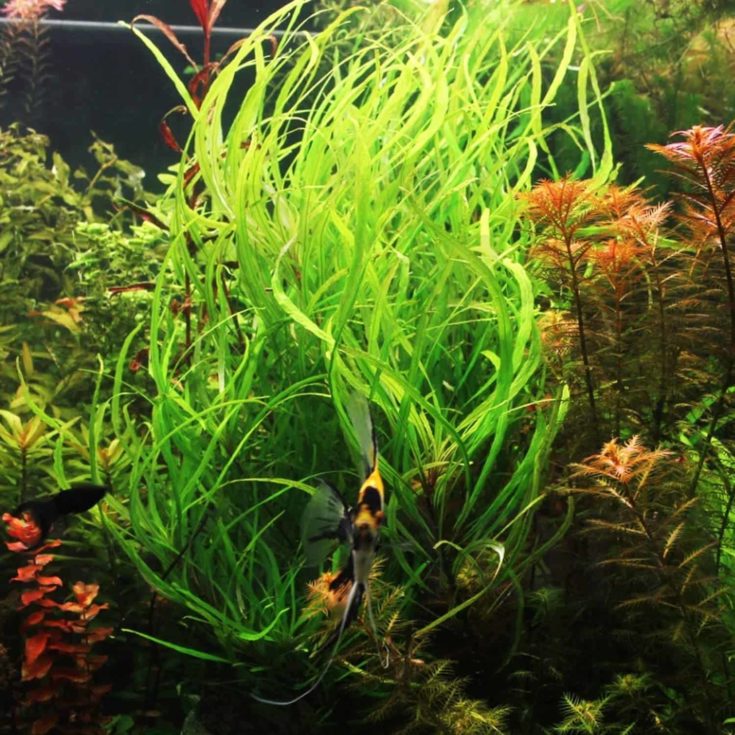

- Full title: Mainam Hygrophila Salicifolia
- Care downside: Easy to Common
- Gentle Diploma: Medium
Hygrophila can also be referred to as Widespread Swamp Weed. This beautiful flowering plant is a member of the acanthus family, and there are between 80 to 100 species of Hygrophila, a couple of of which might be aquatic.
These vegetation are very hardy and simple to develop, making them ideally fitted to a beginner’s setup. Moreover, the vegetation deplete quite a lot of nitrates, serving to to keep up the tank healthful and guarded in your fish.
17. Anubias Nana Petite
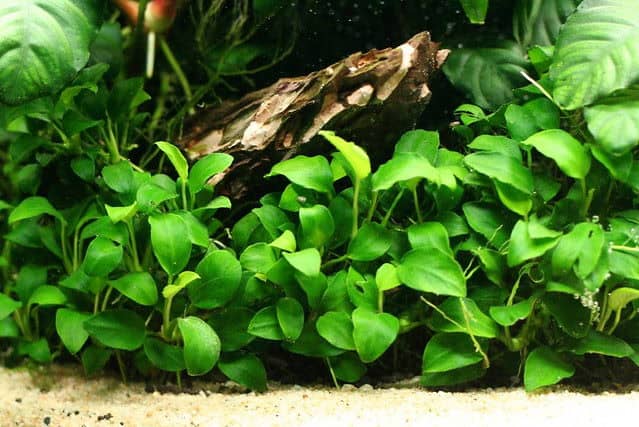

- Full title: Anubias Nana Petite
- Care downside: Easy
- Gentle Diploma: Medium
Anubias nana petite is a really modern different of aquarium plant that’s accessible and low-cost to buy.
These vegetation have small, vibrant inexperienced leaves that make this a extremely useful foreground specimen, and their undemanding nature makes Anubias ideally fitted to newbies and expert aquarists alike.
Anubias nana petite is an epiphyte. Epiphytes can develop on totally different vegetation, absorbing moisture and nutritional vitamins with out harming the host plant.
18. Chaetomorpha
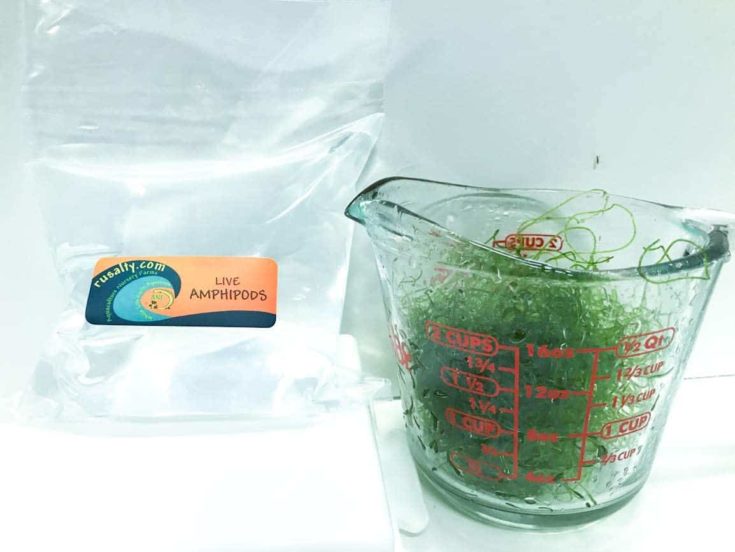

- Full title: Chaetomorpha
- Care downside: Easy
- Gentle Diploma: Low to Extreme
Chaetomorpha can also be referred to as spaghetti algae.
These vegetation are usually utilized in refugiums to develop a thick mattress of macroalgae. Chaetomorpha creates vital habitat for pods and totally different microcrustaceans, along with having ornamental makes use of.
Nonetheless, the precept use of Chaetomorpha is to absorb additional nitrates and phosphates from the aquarium water. The nutritional vitamins are far from the system when the algae are harvested and thrown away.
19. Micro Sword
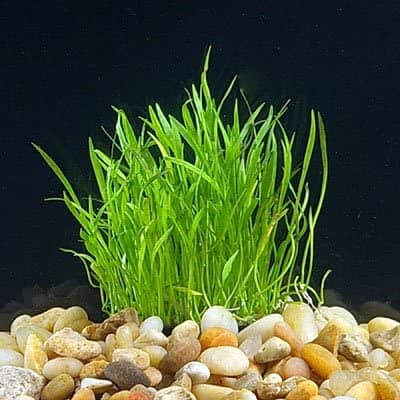

- Full title: Lilaeopsis brasiliensis
- Care downside: Easy
- Gentle Diploma: Low to Extreme
When equipped with optimum conditions, micro Sword is a fast-growing plant, rapidly forming a thick carpet over the substrate.
The plant has good inexperienced, grass-like leaves that quickly arrange a colony the place spawning fish can lay their eggs and fry can shelter. You’ll have to hold on excessive of pruning the plant so that it doesn’t invade totally different vegetation in your setup. It is best to make the most of the clippings to propagate new vegetation simply by planting them throughout the substrate.
What Is Nitrate And How Does It Get Into Your Aquarium?
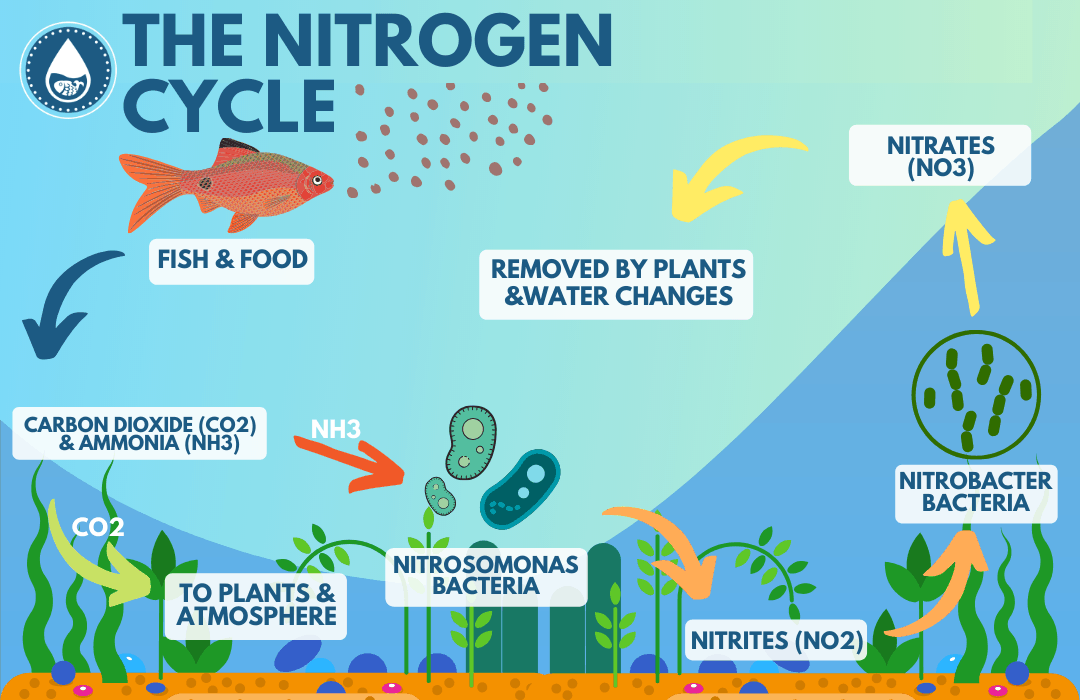

Nitrate is a chemical that’s produced by the useful micro organism in your filter media as a product of the Nitrogen Cycle. Though it’s not good in your fish and the other dwelling creatures in your fish tank, nitrate is unquestionably part of a healthful, functioning ecosystem.
Throughout the Nitrogen Cycle, the ammonia that’s given off by decomposing pure matter is remodeled into nitrite and nitrate by diversified species of micro organism. Ammonia and nitrite are most likely lethal for fish and ranges should always be at zero. Nonetheless, nitrates are a lot much less harmful and should ideally be at ranges of 20ppm or a lot much less.
To take care of the levels of nitrates throughout the water to a minimal, you have to to carry out partial water modifications each week, altering the dirty water with clear, dechlorinated water. Nonetheless, aquatic vegetation naturally take away nitrates out of your aquarium by using the chemical substances as a type of fertilizer.
So, in precept, you could tempo upcycling in a model new aquarium by filling it with vegetation in a course of known as “silent biking.”
How Do Your Aquarium Vegetation Use Nitrates?
Aquarium vegetation take up nitrates and totally different nitrogen compounds, along with ammonia and nitrite from the water.
Vegetation can metabolize these substances, using them as developing blocks to create pure molecules. That’s excellent news in your fish and invertebrates, as these self similar compounds are terribly harmful to them, notably within the occasion that they’re allowed to construct up throughout the water.
Vegetation should be healthful to absorb nitrate and thrive, and they also moreover need on the very least eight to 10 hours of sunshine on every day foundation. Utterly totally different species of vegetation need completely totally different ranges of sunshine, so always double-check that your aquarium lighting unit fulfills the requirements of the vegetation you want sooner than you add them to your setup.
Some vegetation can survive with out additional supplementation. Nonetheless, others desire a serving at hand inside the kind of carbon dioxide and liquid or tablet fertilizer dietary dietary supplements, with out which the vegetation acquired’t thrive or be able to soak up nitrates.
Can Vegetation Add Nitrogen Compounds To Your Aquarium?
To your vegetation to remove nitrates successfully out of your fish tank, you could possibly maintain them. So, widespread trimming is required to remove lifeless and shed leaves, trim broken stems, and likewise you moreover should take out any vegetation that die.
Within the occasion you go away lifeless plant supplies throughout the tank, it may possibly quickly decompose, together with additional ammonia and nitrite to the water and compromising the water prime quality.
What Makes The Biggest Nitrate Consuming Vegetation?
Primarily, vegetation that develop in a short while have the perfect demand for nitrate and phosphate, along with totally different nutritional vitamins that the vegetation can derive from the water column.
Vegetation use nitrates for healthful, vigorous leaf growth. So, the additional leaves your vegetation put out and the additional vigorous their growth worth, the additional nitrates the vegetation will use.
Column Feeders vs. Root Feeders
Some plant species extract the nutritional vitamins they need instantly from the water column. These vegetation embrace floating species and folks which may be mounted to driftwood or rocks. These vegetation are known as column feeders, extracting nutritional vitamins by the use of rhizomes.
Root feeders take within the vitamin they need instantly from the substrate. When you have got root feeders in your aquarium, you’ll wish to make use of a gravel substrate to keep up the vegetation anchored, along with allowing the free motion of water by way of the gravel to the plant’s root system.
Of the two, column feeders are your best choice for sustaining nitrate ranges down because of they extract the nutritional vitamins they need instantly from the water column.
Completely different Strategies To Reduce Nitrates In The Aquarium
Along with using vegetation for nitrate low cost in your fish tank, there are a selection of various wise strategies to do this, along with:
- Ending up widespread partial water modifications is awfully environment friendly at decreasing nitrate ranges throughout the water and should form part of your widespread maintenance regime.
- When performing the water modifications, vacuum the aquarium substrate completely to remove decomposing pure matter sooner than it pollutes your water.
- When performing the water modifications, vacuum the aquarium substrate completely to remove decomposing pure matter sooner than it pollutes your waDon’t overfeed your fish! Overfeeding can go away uneaten meals decomposing throughout the tank, producing quite a lot of ammonia that’s quickly processed into nitrites and nitrate. Moreover, the additional meals your fish eat, the additional waste they produce, together with to the burden in your natural filter and contributing to the build-up of poisons.
- Keep in mind to rinse your filter media in tank water each month. That removes secure waste particles that are trapped throughout the media, which may decompose, lastly ending up as nitrates throughout the water. Concede to alter the filter media consistent with the producer’s solutions to make it possible for the filtration system stays setting pleasant.
In Conclusion
Did you benefit from our data to using dwelling vegetation to chop again nitrates in your fish tank? Within the occasion you probably did, envisage to share!
Residing vegetation extract nitrates instantly from the water to utilize as nutritional vitamins. Fast-growing, column-feeding plant species are most likely probably the most setting pleasant at extracting nitrates from the water, so think about deciding on these in your aquarium.
What aquatic vegetation do you want and why? Inform us throughout the suggestions half underneath.
